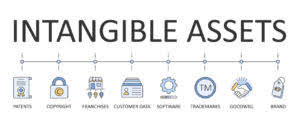
Working capital is calculated by taking a company’s current assets and deducting current liabilities. For instance, if a company has current assets of $100,000 and current liabilities of $80,000, then its working capital would be $20,000. Common examples of current assets include cash, accounts receivable, and inventory. Examples of current liabilities include accounts payable, short-term debt payments, or the current portion of deferred revenue.
Analyst Certification FMVA® Program

If you look at current assets and current liabilities, you will find them on the balance sheet. The net working capital calculation is an essential financial metric used to measure the deviation or divergence between an entity’s current assets and current liabilities. Every business enterprise extensively uses this metric to understand the economic or financial condition of the enterprise. Companies in this situation may resort to high-cost solutions like factoring receivables or short-term bridge loans to address cash flow gaps.
- A high NWC means a company has significantly more current assets than liabilities, which may indicate strong liquidity.
- If all current liabilities are to be settled, the company would still have $430,000 left to continue operating.
- For example, during periods of rising prices, LIFO results in higher costs of goods sold and lower taxable income, while FIFO better reflects current market conditions.
- Alternatively, bigger retail companies interacting with numerous customers daily, can generate short-term funds quickly and often need lower working capital.
- Current assets equal $150,000 ($30,000 cash plus $50,000 accounts receivable plus $70,000 inventory).
Net Working Capital Calculator (NWC) — Excel Template

Net working capital should be positive because it shows that the company is expected to receive more cash inflows than the cash outflows it is required to make in next twelve months. What is a more telling indicator of a company’s short-term liquidity is an increasing or decreasing trend in their net WC. A company with a negative net WC that has continual improvement year over year could be viewed as a more stable business than one with a positive net WC and a downward trend year over year.
Working capital ratio
- A negative net working capital, on the other hand, shows creditors and investors that the operations of the business aren’t producing enough to support the business’ current debts.
- On the other hand, examples of operating current liabilities include obligations due within one year, such as accounts payable (A/P) and accrued expenses (e.g. accrued wages).
- Therefore, net working capital shows how much a company’s short-term resources exceed amounts due within a year.
- A high net working capital value and high current ratio show good liquidity position, but it also results in lower net working capital turnover ratio.
Net Working Capital serves as a critical measure of a company’s liquidity, reflecting its ability to meet short-term obligations. For example, a strong NWC position often correlates with a quick ratio above 1, indicating sufficient liquid assets like cash and receivables to cover immediate liabilities without relying on inventory. The quick ratio provides a sharper focus on liquid assets compared to the broader current ratio. Inventory, including raw materials, work-in-progress, and finished goods, is a significant current asset that impacts NWC. The valuation method—FIFO, LIFO, or weighted average cost—affects financial reporting and tax outcomes. For example, during periods of rising prices, LIFO results in higher costs of goods sold and lower taxable income, while FIFO Bookkeeping for Painters better reflects current market conditions.

Each one of these steps will help improve the short-term liquidity of the company and positively impact the analysis of net working capital. This value can be positive or negative, depending on the condition of the business. If it is positive, implying more of assets than liabilities, it is good for the company, since it has more funds to pay off its current debts. Investors use NWC to know whether a company is liquid enough to pay off its short-term liabilities.
Learn more
Therefore, as of March 2024, Microsoft’s working capital metric was approximately $28.5 billion. If Microsoft were to liquidate all short-term assets and extinguish all short-term debts, it would have almost $30 billion remaining cash. Working capital is the difference between a company’s current assets and its short-term liabilities. Until unearned revenue the payment is fulfilled, the cash remains in the possession of the company, hence the increase in liquidity. But it is important to note that those unmet payment obligations must eventually be settled, or else issues could soon emerge. While A/R and inventory are frequently considered to be highly liquid assets to creditors, uncollectible A/R will NOT be converted into cash.
- Each one of these steps will help improve the short-term liquidity of the company and positively impact the analysis of net working capital.
- If future periods for the current accounts are not available, create a section to outline the drivers and assumptions for the main assets.
- Understanding the intricacies of its formula, components, and limitations provides valuable insights into a firm’s liquidity and operational efficiency.
- Additionally, companies with weak NWC may face stricter loan covenants, such as maintaining specific liquidity ratios, further constraining financial flexibility.
Debt Paydown Yield: What Is It, Calculation, Importance & More
Since Paula’s current assets exceed her current liabilities her WC is positive. This means that Paula can pay all of her current liabilities using only current assets. In other words, her store is very liquid and financially sound in the short-term. She can use this extra liquidity to grow the business or branch out into additional apparel niches.

Protect your business

But if there is an increase in the net working capital adjustment, it isn’t considered positive; rather, it’s called negative cash flow. Most major new projects, like net working capital equals expanding production or entering into new markets, often require an upfront investment, reducing immediate cash flow. Therefore, companies needing extra capital or using working capital inefficiently can boost cash flow by negotiating better terms with suppliers and customers.

